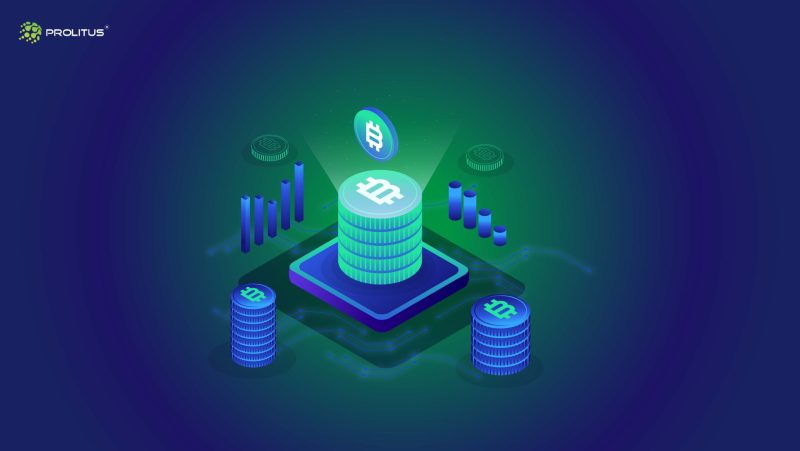Decentralization and Immutability are two aspects of blockchain proving to be a boon to humankind. Decentralization changed the whole perspective of investors across major industries. It changed how trade was executed by providing fast, low-cost, and instant solutions.
The advancements in the crypto industry are making it easy for beginners to enter the ecosystem. The newer innovations are simplifying exchanging or swapping crypto to a larger extent. It has thrown light on the improved user experience by eliminating the prevalent complexities.
However, the primary differences between swapping and exchanging crypto are not known to many. The guide below will discuss the two ways to find out which would be perfect for you.
What is a swap?
Swap allows a user to exchange two tokens between two unique blockchain protocols. The distinguishing line is that it facilitates trade without needing a traditional crypto-to-fiat exchange. Swapping allows users to quickly swap tokens directly from the official private key wallet or trading account.
Generally, users use swapping technology to swap one asset to another quickly. It could be due to the asset’s growth or other reasons. Some users swap tokens to hedge against risks, while some swap tokens in a bear market to shift to a stablecoin.
How does swapping work?
As mentioned earlier, swapping performs crypto-to-crypto exchange without any need for fiat transactions. Generally, swapping provides a more accessible gateway to cryptocurrencies with low market capitalization.
For example, if you want to exchange your BTC with FIL, you must search for an exchange that provides a BTC/FIL trading pair. To perform a transaction, you must trade BTC for fiat currency and exchange fiat for FIL.
However, the process is cost-ineffective as you have to pay transaction fees multiple times. As a remedy, platforms began enabling instant swap functionalities to allow users to exchange a crypto asset instantly. The platforms enable a convenient and secure crypto-to-crypto gateway for the seamless conversion of cryptocurrencies.
A crypto swapping service puts forward speed, simplicity, affordability, and security. Also, some platforms allow users to buy cryptocurrencies with credit or debit cards. For example, platforms such as Shapeshift, Changelly, ChangeNow, and Simpleswap provide crypto swapping services to users.
Some important points to note while choosing a platform are the availability of crypto pairs, security, and speed. A platform that performs transactions instantly will also negate the possibility of slippage. Even some platforms began offering fixed swap rates to reduce slippage. But, the only catch is you may have to burn a hole in the pocket in the name of the transaction fee.
What is an exchange?
A crypto exchange is a platform that facilitates buying and selling of cryptocurrencies. A user can use a crypto exchange to trade one crypto for another. For example, if you want to convert Ethereum to Avalanche or buy crypto using a fiat currency.
The cryptocurrency exchange provides real-time market prices for seamless trades. Also, users can convert crypto back into fiat currency to withdraw the amount in their bank account. Generally, an exchange is classified into two types: centralized and decentralized. We will now discuss the workings of the two.
What is a centralized exchange?
As the name suggests, a centralized exchange is controlled by a central authority. It is an online exchange platform that allows users to trade digital and tangible assets. For example, Binance is a popular exchange that has a wide range of cryptocurrencies for users.
Technically, a centralized exchange acts as a middleman between the buyers and sellers involved in trading. It generates its profits through transaction fees and commissions. While selecting a centralized exchange, it is crucial to look for the trading volume as it is inversely proportional to volatility.
Centralized exchanges also fuel platforms for launching feature-packed exchanges where people can trade, invest and earn returns with decent liquidity. However, in recent years, there has been a clear shift of preference from centralized trading to decentralized trading.
How does a centralized exchange work?
As we already know, centralized exchanges are controlled by a central authority, and traders need to trust this centralized authority to perform further trades. Let’s understand the working of a centralized exchange with an example.
CEXs facilitate buying, selling, and exchanging of digital assets. A user has to create an account on the respective platform and complete KYC verification to start trading assets on the exchange. But, it is essential to note that the exchange takes over the custody of funds that users deposit and issues currency on its platform for trading purposes.
Technically, a centralized exchange acts as a middleman that matches the buyer and seller to perform an exchange between them. It uses the Order Book Method to execute trades which also results in a long waiting time for the traders.
What is a decentralized exchange?
A decentralized exchange is built on the blockchain, allowing people to trade digital assets on a secure and transparent platform without intermediates. Decentralized exchanges (DEXs) have almost all the features of a centralized exchange with an option to trade thousands of coins virtually.
A contrasting difference between centralized exchanges is that third parties look after the security and manage funds like banks and stock exchanges. While there are no third parties in DEXs as it depends on self-executing smart contracts to help simplify the exchange process.
How does decentralized exchange work?
Present-day decentralized exchanges have several advantages over the previous ones. The first-generation DEXs use the order books method that works similarly to centralized exchanges. But, the latest decentralized exchanges implement a new mechanism called the Automated Market Maker (AMM). Let’s understand the AMM method.
Automated market maker method (AMM)
It is an algorithm used by popular decentralized platforms such as Sushiswap and Uniswap. Automated Market Maker addresses the liquidity challenge of the traditional order book method and offers many other benefits. It allows traders to perform transactions freely and does not require traders to wait long to find matching trades.
Instead, traders can make fast trades using a pool of funds that automatically execute trades based on certain parameters. It follows the principle of demand and supply as each time someone buys a token; the pool increases the price of that specific token. But, it decreases the time every time a trader sells a token. Hence, the exchange system becomes fully automated, eliminating counterparty and security risks.
What are the differences between exchanging and swapping cryptocurrency?
Blockchain technology is the core concept that gave birth to cryptocurrencies. Although each process has its own pros and cons, it solely depends on the user which route they wish to take. When we talk about swapping cryptocurrencies, it finalizes the transaction instantly with lower fees. But how will you swap the coin if you do not have crypto in your wallet?
Here comes the exchange that eases the process of buying crypto with fiat. Once the user has crypto, they can choose to use a decentralized exchange or swap platform to facilitate the transaction. Additionally, it is essential to consider significant aspects of regulation, data verification, transaction fees, security, user interface, and risk assessment to determine the process you must opt for.
Final Thoughts
The above article summarizes the two methods available to choose for your work. While both have their pros and cons, it depends on how you wish to take the transaction. If you plan to convert fiat to crypto, it will be beneficial to take the route of a centralized exchange. Once you gain crypto, it becomes a cakewalk to send to a decentralized wallet and choose a DEX or swap platform for your future transactions!
Why should you choose Prolitus for your development services?
Prolitus has an expert and professional team of blockchain developers that can help you to build an exchange or a swapping platform. Our developers have years of experience to help you focus on the business while they take care of the platform development.
Our developers provide best-in-class technical support and are committed to building robust architecture. The team thoroughly tests the product to provide a platform that stands the test of time and tide. Get in touch with our team for all your blockchain needs!
Frequently Asked Questions (FAQs)
What is the difference between swap and exchange?
Swapping allows a user to exchange two tokens between two unique blockchain protocols. They process transactions at a relatively faster rate. On the contrary, an exchange is a platform that facilitates buying and selling of cryptocurrencies.
Is swapping better than crypto exchange?
Swapping crypto is seamless and quick as you do not have to undergo a fiat transaction. But, taking the route of a crypto exchange is a time taking process. Generally, swapping is also cost-efficient as a user can convert one crypto coin into another coin without the need for fiat currencies.
Which crypto exchange is best in 2022?
According to NerdWallet's update, it has ranked Binance as the best crypto exchange. The second spot goes to Kraken, followed by Crypto.com.





